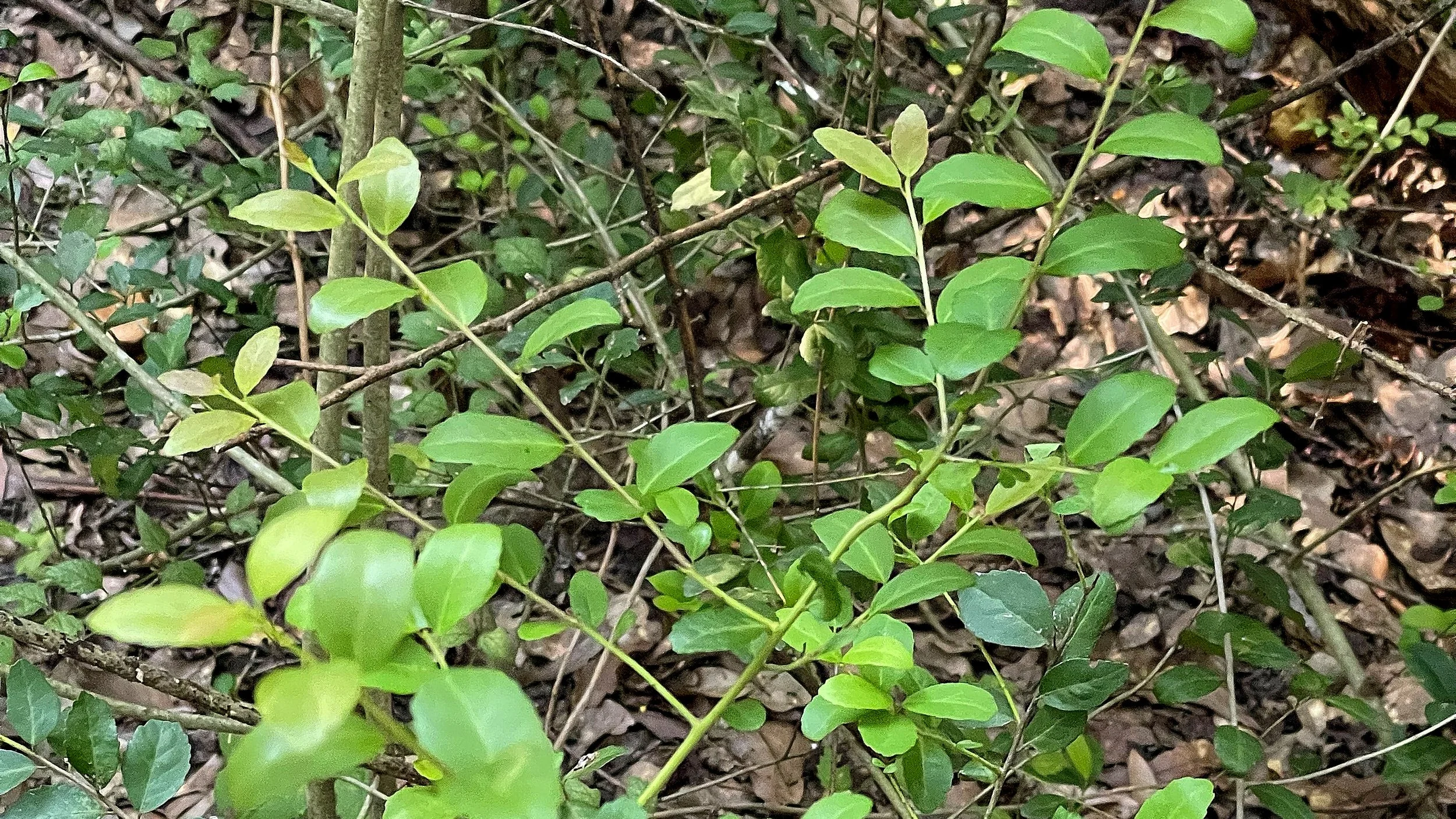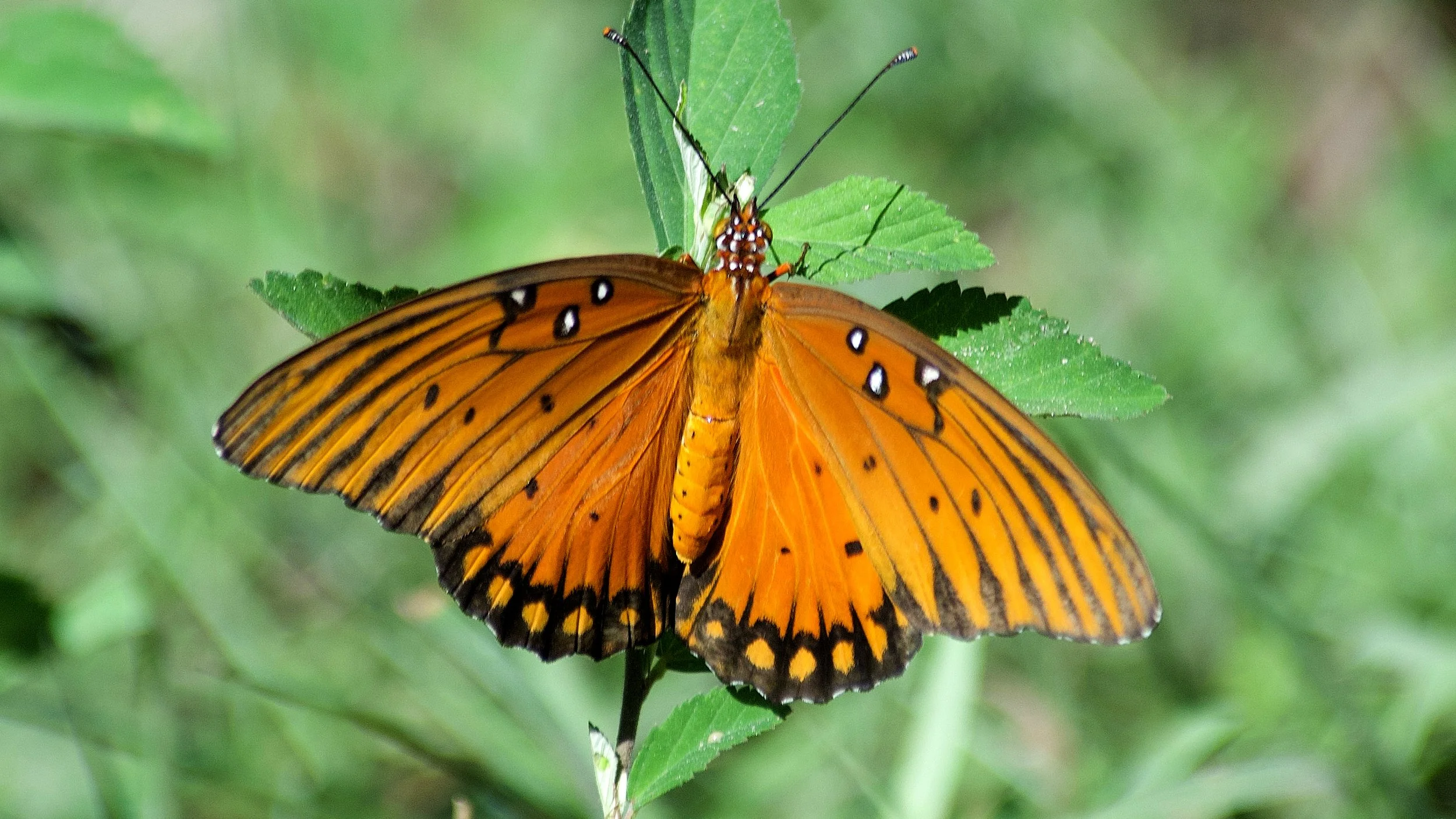Once called “The Woods” by the surrounding neighborhoods and dedicated as “West 11th Street Park” in 2008, today our urban forest is called, “The Lorraine Cherry Nature Preserve,” after the woman who was pivotal to preserving this green space.
Tour Map
Birding Hot Spot - TLCNP
LCNP is a nationally known birding “Hot Spot”. Ebird.org has been collecting data on the park since 1998 and over 153 species of birds have been documented in the park.
Tour Stop 2: American Beautyberry
Tour Stop 3: Dead Trees and Woodpeckers
Tour Stop 4: Yaupon Holly
Tour Stop 5: Tree Rings
When Hurricane Ike passed through Houston in 2008, the park lost a lot of trees like this one. These trees were not removed but were left to provide habitat for insects, amphibians and other creatures and to decompose, returning nutrients back to the soil. But the cross-sawn trunk of the pine tree in front of you also provides a window into the past.
Stop 6: Ross Hancock Ephemeral Pond
A tree fell here and a small pond was created where the root ball was. When it rains, the pond will collect and hold water, but it will eventually dry up if we have a long, hot, dry spell, especially during the summer months. Since the pools are temporary, frogs and salamanders can lay their eggs without fear of aquatic predators.
Tour Stop 7: Poison Ivy
DO NOT TOUCH! All parts of poison ivy are toxic to humans. Remember the following sayings to protect yourself: “Leaves of three, let it be.” “If it’s hairy, it’s scary!” and “Berries white are a fright.” The rash that can result from those sensitive or allergic and exposed to poison ivy can be a nuisance.
Tour Stop 8: Hercules Club
Also called the Toothache Tree or Tickle Tongue Tree, the bark and leaves contain a chemical compound that produces a numbing sensation in the mouth. Native Americans and early settlers used the leaves as a remedy for toothaches, and mothers would rub their baby’s gums with the leaves to soothe the pain of teething.
Tour Stop 9: New Growth Pine
As this small grove of young Loblolly Pines grows up, they create an environment that limits the growth of competing plants. The thick carpet of pine needles underneath the trees serves to prevent light from hitting the ground around the trees. As the carpet of pine needles decomposes the acidity of the soil increases thus making it difficult for other plants to grow.
Tour Stop 10: Palmettos and Wetlands
Tour Stop 11: Winged Elm
Tour Stop 12: Storm Water Mitigation
An urban oasis such as ours offers a tremendous flood mitigation benefit. A big tree like each of these twin Water Oaks can soak up as much as 140 gallons of water a day through their roots! There are over 1,200 trees this size or larger in our nature preserve, which together absorb up to 168,000 gallons of water a day - not even considering the thousands of smaller trees, the water that’s absorbed into the ground, and the water that evaporates from leaves and branches.
Tour Stop 13: Shelf Fungi
Tour Stop 14: Hackberry Trees
Hackberries, relatives of the elm tree, grow rapidly under a variety of conditions, eventually reaching 60-70 feet, and provide food for a wide range of organisms. The dull, red berries that appear in early fall are a favorite of birds and squirrels, persisting throughout the winter providing food at a time when little else is available.
Tour Stop 15: Leaf Litter
Tour Stop 16: Green Ash Trees
Tour Stop 17: Carolina Laurel Cherry
Tour Stop 18: Native Flower Gardens
In addition to providing habitat for wildlife, these gardens help conserve water by growing native plants. When the gardens were created, we built healthy soil by using compost to incorporate organic matter. By allowing the leaf litter and dead perennial plant material to remain in the garden over the winter, the garden produces its own compost yearly.



















